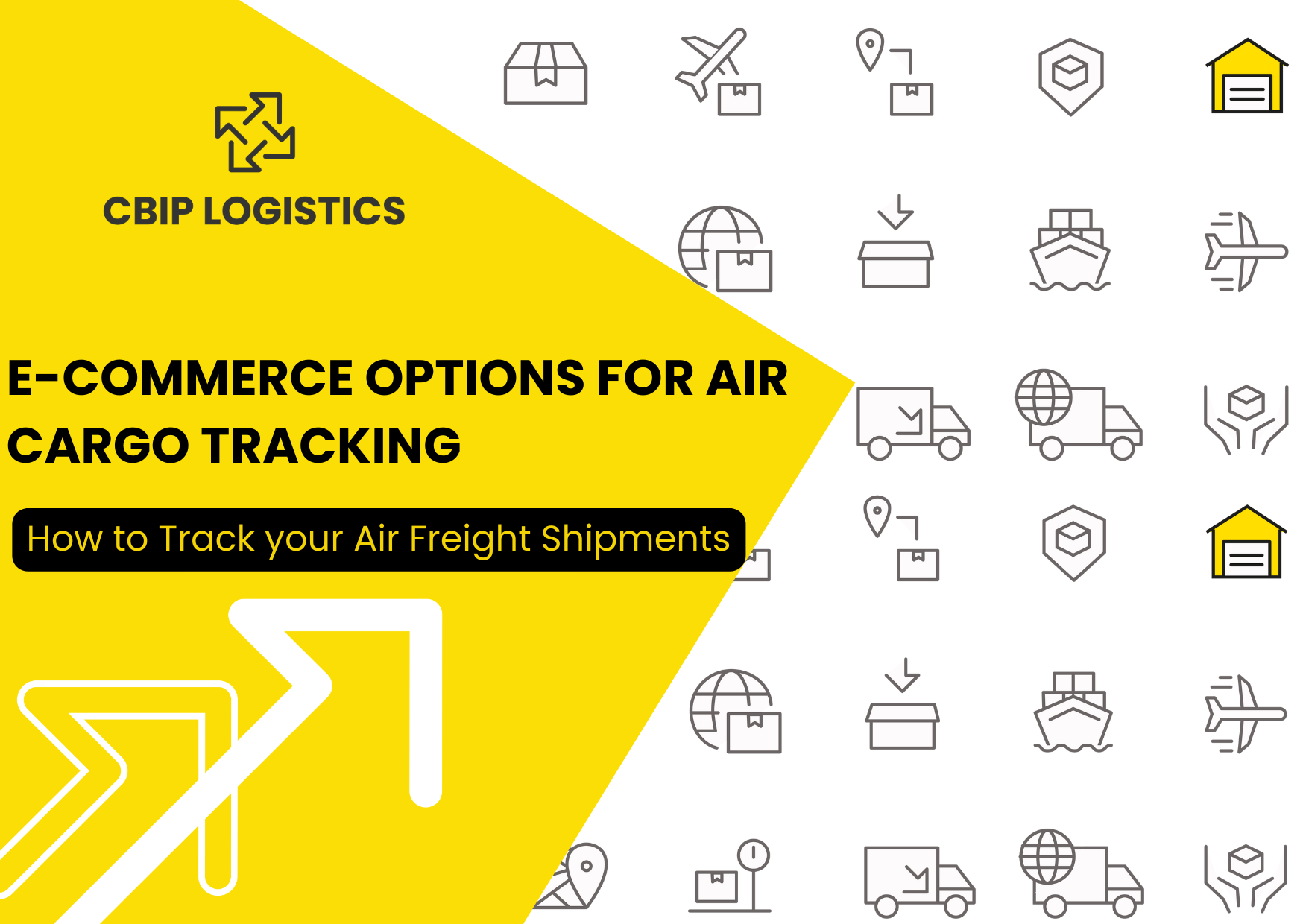E-Commerce and Air Freight: Options For Air Cargo Tracking

E-commerce has sped up the adoption of air freight, as the expectation for fast delivery times resulted in an uptake in air freight demand. According to McKinsey, in Q2 2020, e-commerce achieved the growth previously forecasted for the next ten years.
New expectations brought about by e-commerce have been high. Around 2015, e-commerce retailers began pushing for same-day domestic delivery and 72-hour international shipping. In most cases, air freight is the only option to achieve that kind of delivery speed.
Although air shipment is the quickest and safest, tracking can be tricky. You must track parcels through the first mile, airport, plane, customs, and last-mile delivery.
Customers want speed, predictability of delivery times, and visibility. New expectations have pressured air freight forwarders to offer end-to-end tracking, but the air freight industry still has a lot of work to do to catch up with the demands of today’s e-commerce retail industry.
In spite of the various challenges that the air freight industry is up against, air freight is one of the fastest, safest ways to ship your parcels. By partnering with the right logistics partners and knowing your way around the following tracking techniques, you can assure speedy reliable air freight delivery for all your shipments.
Read about CBIP's Adaptable 4PL Logistics Services
Options for air cargo tracking
In general, there are three routes to take for air cargo tracking:
Airline based
With airline-based track and trace, you are simply using the airline’s tracking system as your method for package tracking.
This means that you will need to periodically log on to your portal for that airline to check package status or automate the tracking process by integrating the airline tracking system with your internal ERP.
You can do this on your own if you have a capable team. Otherwise, you can hire a partner to complete this integration for you.
Positive aspects of this method include:
- You know the location of your flight in real-time.
- The EDI is scanned at the airport; this takes care of shipping documents.
While the negatives are:
- Limited data: There is no way to know if your items are stuck at customs, damaged, or if they actually are on the flight you are tracking.
- This method provides no first or last-mile visibility.
GPS-based tracking system
You can also use your own GPS tracking system by shipping GPS trackers with your shipment. As long as the GPS devices have a signal, you will be able to tell exactly where your parcel is.
Positive aspects of this method include:
- GPS gives you visibility from the first mile to the last.
While the negatives are:
- GPS devices may not be approved by the airline you are using.
- There is no way to tell if a single parcel is separated from the order as a whole.
- The device cannot tell you the status of the customs process or the condition of your parcels.
Freight forwarder’s tracking system
Using your freight forwarder’s tracking system in addition to the airline’s tracking system, you can track parcels as they move from different modes of transportation.
The freight forwarder’s GPS tracking system lets you see where your package is from the first to the last mile — provided that they are using GPS tracking.
Positive aspects of this method include:
- Using the airline’s tracking system with your freight forwarder’s tracking system gives you fairly consistent info on the status of the flight and the location of your shipment as it moves through other stages and modes of fulfillment.
- Your freight forwarder can assist and provide updates on the customs process.
While the negatives are:
- At multiple points throughout the shipping process, there is still limited visibility. Knowing the state of your parcels and if they actually boarded the plane remains a challenge.
RELATED: Understanding the Future of Air Freight
The future of air cargo: Challenges ahead
According to the Boeing World Air Cargo Forecast, global freight fleets will grow over 70 percent in the next twenty years.
Although e-commerce has bolstered the industry, air freight still faces a number of barriers to achieving the level of service today’s customer desires. The challenges vary from region to region and across industries, but broadly airlines struggle with the following:
- Lagging implementation of digital communications (lack of visibility and transparency)
- Difficulty following industry standards(damaging packages, inefficient, congested facilities)
- Customs compliance requirements causing slowdowns
Despite improvements over the past few years, it is still estimated to take an average of 2.1 days globally for a parcel to clear customs. However, many airlines are trying to overhaul their tracking capabilities and partner with logistics players to catch up to industry standards.
Work with a logistics provider that advocates for you to get the best air freight services
While the airfreight industry catches up to e-commerce tracking standards, you need to find a way to get the best tracking you can now.
Partnering with CBIP means you won’t have to worry about optimizing your tracking. As your full-service fourth-party logistics partner, we are the ones communing with airlines to secure you the best tracking on your shipments possible.
Not only that, but we will also integrate air freight tracking with all of the other stages of your logistics — building your ideal end-to-end tracking solution on CBIP’s online platform, and making all of that info available to you in one place.
Want to chat with us about our technique for getting you the best visibility possible for your air cargo shipments? Contact us today to meet with one of our professionals.






